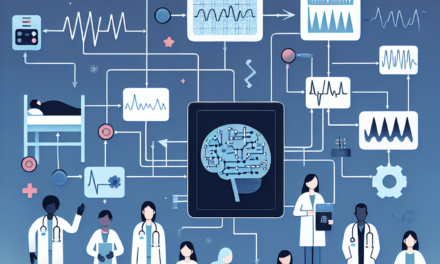Enhancing Healthcare Quality: An In-Depth Guide to Medical Credentialing Services
In the ever-evolving landscape of healthcare, ensuring quality and safety is paramount. One of the critical components that contribute to healthcare quality is medical credentialing. This process verifies the qualifications, experience, and professional history of healthcare providers, ensuring that patients receive care from competent professionals. This article delves into the intricacies of medical credentialing services, exploring their importance, processes, challenges, and future trends.
Understanding Medical Credentialing
Medical credentialing is a systematic process that healthcare organizations use to verify the qualifications of healthcare providers. This includes physicians, nurses, and allied health professionals. The primary goal is to ensure that these professionals meet the necessary standards to provide safe and effective care.
The credentialing process typically involves several key steps:
- Application Submission: Healthcare providers submit applications that include their educational background, training, work history, and any relevant certifications.
- Verification: Credentialing specialists verify the information provided by contacting educational institutions, training programs, and previous employers.
- Background Checks: This includes checking for any malpractice claims, disciplinary actions, or criminal history.
- Review and Approval: A credentialing committee reviews the verified information and makes decisions regarding the provider’s qualifications.
- Ongoing Monitoring: Credentialing is not a one-time process; ongoing monitoring is essential to ensure that providers maintain their credentials and comply with regulations.
Credentialing is crucial for several reasons. It helps healthcare organizations mitigate risks, enhance patient safety, and comply with regulatory requirements. Moreover, it builds trust with patients, as they can be assured that their healthcare providers are qualified and competent.
The Importance of Credentialing in Healthcare Quality
Credentialing plays a vital role in enhancing healthcare quality. It serves as a foundation for patient safety and quality assurance. Here are some key reasons why credentialing is essential:
- Patient Safety: By verifying the qualifications of healthcare providers, credentialing helps prevent unqualified individuals from delivering care, thereby reducing the risk of medical errors.
- Regulatory Compliance: Healthcare organizations must comply with various regulations and standards set by accrediting bodies. Credentialing ensures that providers meet these requirements.
- Quality Assurance: Credentialing is part of a broader quality assurance framework that includes continuous monitoring and evaluation of healthcare providers.
- Reputation Management: Organizations that prioritize credentialing can enhance their reputation and build trust with patients and the community.
- Financial Implications: Credentialing affects reimbursement rates from insurance companies. Providers who are not properly credentialed may face delays or denials in payment.
For instance, a study published in the Journal of Healthcare Management found that hospitals with robust credentialing processes reported fewer malpractice claims and higher patient satisfaction scores. This underscores the direct correlation between effective credentialing and improved healthcare outcomes.
The Credentialing Process: Step-by-Step
The credentialing process can be complex and time-consuming, but it is essential for maintaining high standards in healthcare. Here’s a detailed look at each step involved in the credentialing process:
1. Application Submission
The first step in the credentialing process is the submission of an application by the healthcare provider. This application typically includes:
- Personal information (name, contact details, etc.)
- Educational background (degrees, institutions attended)
- Training and residency information
- Work history (previous employers, positions held)
- Licenses and certifications
Providers must ensure that the information is accurate and complete, as any discrepancies can lead to delays or denials in the credentialing process.
2. Verification of Credentials
Once the application is submitted, credentialing specialists begin the verification process. This involves:
- Contacting educational institutions to confirm degrees and training.
- Verifying licenses with state medical boards.
- Checking work history with previous employers.
- Reviewing any board certifications.
This step is critical, as it ensures that the information provided by the healthcare provider is accurate and trustworthy. Credentialing specialists often use specialized software to streamline this process and maintain records efficiently.
3. Background Checks
Background checks are an integral part of the credentialing process. They typically include:
- Criminal background checks to identify any legal issues.
- Malpractice history to assess any previous claims or lawsuits.
- Disciplinary actions from medical boards or professional organizations.
These checks help organizations identify potential risks associated with hiring a particular provider. For example, a provider with a history of malpractice claims may pose a higher risk to patient safety.
4. Review and Approval
After verification and background checks are complete, the information is presented to a credentialing committee. This committee typically includes:
- Medical staff leaders
- Quality assurance personnel
- Legal advisors
The committee reviews the verified information and makes decisions regarding the provider’s qualifications. This step is crucial, as it ensures that only qualified individuals are granted privileges to practice within the organization.
5. Ongoing Monitoring
Credentialing is not a one-time event; it requires ongoing monitoring to ensure that providers maintain their credentials. This includes:
- Regularly checking for updates on licenses and certifications.
- Monitoring for any new malpractice claims or disciplinary actions.
- Conducting periodic re-credentialing every few years.
Ongoing monitoring helps organizations stay informed about their providers’ qualifications and any potential risks that may arise over time.
Challenges in Medical Credentialing
While medical credentialing is essential for ensuring quality in healthcare, it is not without its challenges. Organizations often face several obstacles in the credentialing process:
- Time-Consuming Process: The credentialing process can be lengthy, often taking several months to complete. This can delay the onboarding of new providers and impact patient care.
- Data Management: Managing large volumes of data and documentation can be overwhelming. Organizations must invest in efficient systems to handle this information.
- Regulatory Compliance: Keeping up with changing regulations and standards can be challenging, especially for organizations with limited resources.
- Inter-Organizational Variability: Different organizations may have varying credentialing requirements, leading to confusion for providers who work in multiple settings.
- Cost Implications: The credentialing process can be costly, particularly for smaller organizations that may lack the resources to manage it effectively.
For example, a survey conducted by the American Medical Association found that nearly 60% of healthcare organizations reported challenges related to the time and resources required for credentialing. This highlights the need for more efficient processes and systems to streamline credentialing efforts.
The Future of Medical Credentialing
The landscape of medical credentialing is evolving, driven by technological advancements and changing healthcare dynamics. Here are some trends shaping the future of credentialing:
- Increased Use of Technology: Organizations are increasingly adopting technology solutions, such as credentialing software and electronic health records (EHRs), to streamline the credentialing process.
- Telemedicine Credentialing: With the rise of telemedicine, there is a growing need for credentialing processes that accommodate remote providers and ensure compliance with state regulations.
- Data Analytics: Organizations are leveraging data analytics to monitor provider performance and identify potential risks more effectively.
- Collaboration and Standardization: There is a push for greater collaboration among healthcare organizations to standardize credentialing processes and share information more efficiently.
- Focus on Continuous Learning: Ongoing education and training for healthcare providers are becoming increasingly important, with organizations emphasizing the need for lifelong learning and professional development.
For instance, the National Committee for Quality Assurance (NCQA) has developed standards for credentialing that emphasize the importance of ongoing education and performance monitoring. This reflects a shift towards a more holistic approach to credentialing that prioritizes continuous improvement.
Conclusion
Medical credentialing is a critical component of healthcare quality, ensuring that providers are qualified to deliver safe and effective care. The credentialing process involves several key steps, including application submission, verification, background checks, review, and ongoing monitoring. While challenges exist, advancements in technology and a focus on standardization are shaping the future of credentialing.
As healthcare continues to evolve, organizations must prioritize credentialing as part of their quality assurance efforts. By investing in efficient credentialing processes and embracing new technologies, healthcare organizations can enhance patient safety, improve outcomes, and build trust with their communities.
In summary, effective medical credentialing is not just about compliance; it is about fostering a culture of quality and safety in healthcare. By understanding the importance of credentialing and addressing the challenges it presents, organizations can ensure that they are providing the highest level of care to their patients.





